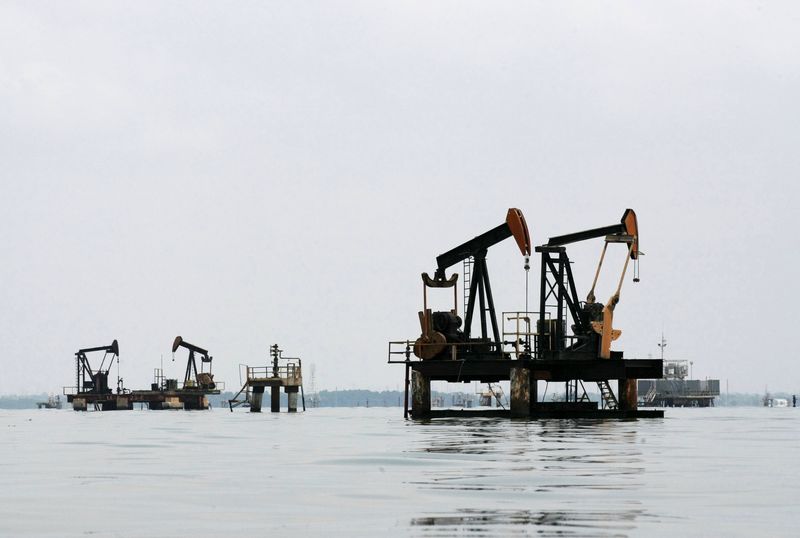Investing.com– Oil prices were muted in Asian trade on Friday, but were set to snap a seven-week winning streak as fears of a Chinese economic slowdown and rising U.S. interest rates clouded the outlook for demand.
Crude prices saw some strength on Thursday, rising about $1 from a two-week low after China’s central bank said it will keep markets flush with liquidity to help shore up economic growth.
But Thursday’s gains were largely insufficient to stem bigger declines in oil prices this week, as a string of disappointing economic readings from the world’s largest oil importer further dented sentiment.
Oil markets also came under pressure from a robust dollar, as strong U.S. economic readings and hawkish signals from the Federal Reserve potentially heralded more interest rate hikes in the country.
steadied at $84.10 a barrel, while rose slightly to $80.48 a barrel by 21:02 ET (01:02 GMT). Both contracts were set to lose between 3.5% and 4% this week.
Oil prices had rallied for the past seven weeks after extended supply cuts by major producers Saudi Arabia and Russia pointed to tighter supplies in the remainder of the year.
China fears persist, more stimulus in focus
Markets are now awaiting more stimulus measures from China, as the country grapples with a slowing post-COVID economic recovery.
The People’s Bank of China had unexpectedly cut short and medium-term lending rates earlier this week, and is now likely to cut its benchmark next week to unlock more liquidity.
Investors are calling on more targeted, fiscal measures to support the economy, particularly China’s beleaguered property sector. The sector accounts for a fourth of the Chinese economy, and is facing a default risk from one of its biggest players- Country Garden Holdings (HK:).
But analysts questioned whether the government will increase fiscal spending to support the economy, with Fitch Ratings saying that such a scenario appeared unlikely.
Dollar strength, Fed rate outlook weighs
While the fell slightly on Friday, it was still sitting on strong gains for the week. Strength in the greenback also weighed on oil prices, given that it makes crude more expensive for international buyers.
Hawkish signals from the of the Fed’s July meeting and signs of continued raised concerns that the bank could keep hiking interest rates, or keep them higher for longer.
While U.S. oil demand has remained stable over the past few months, markets feared a potential decline in fuel consumption, especially as the end of the summer season approaches.
Read the full article here
